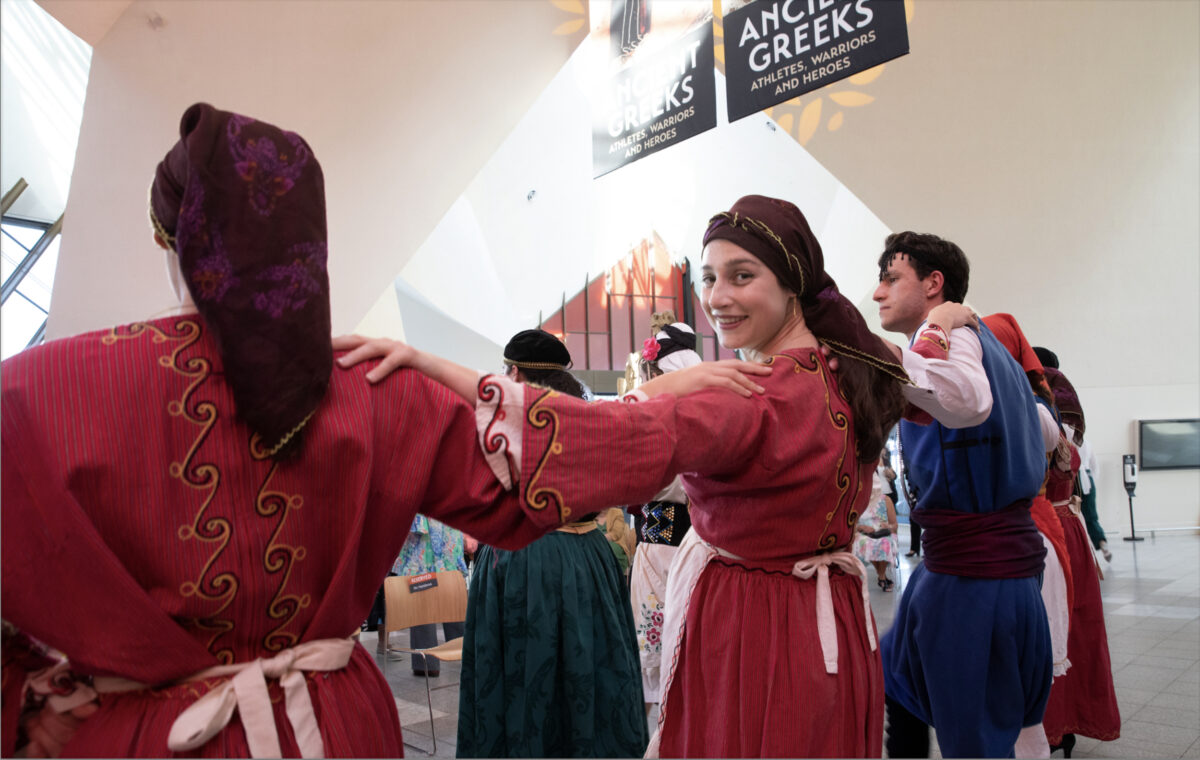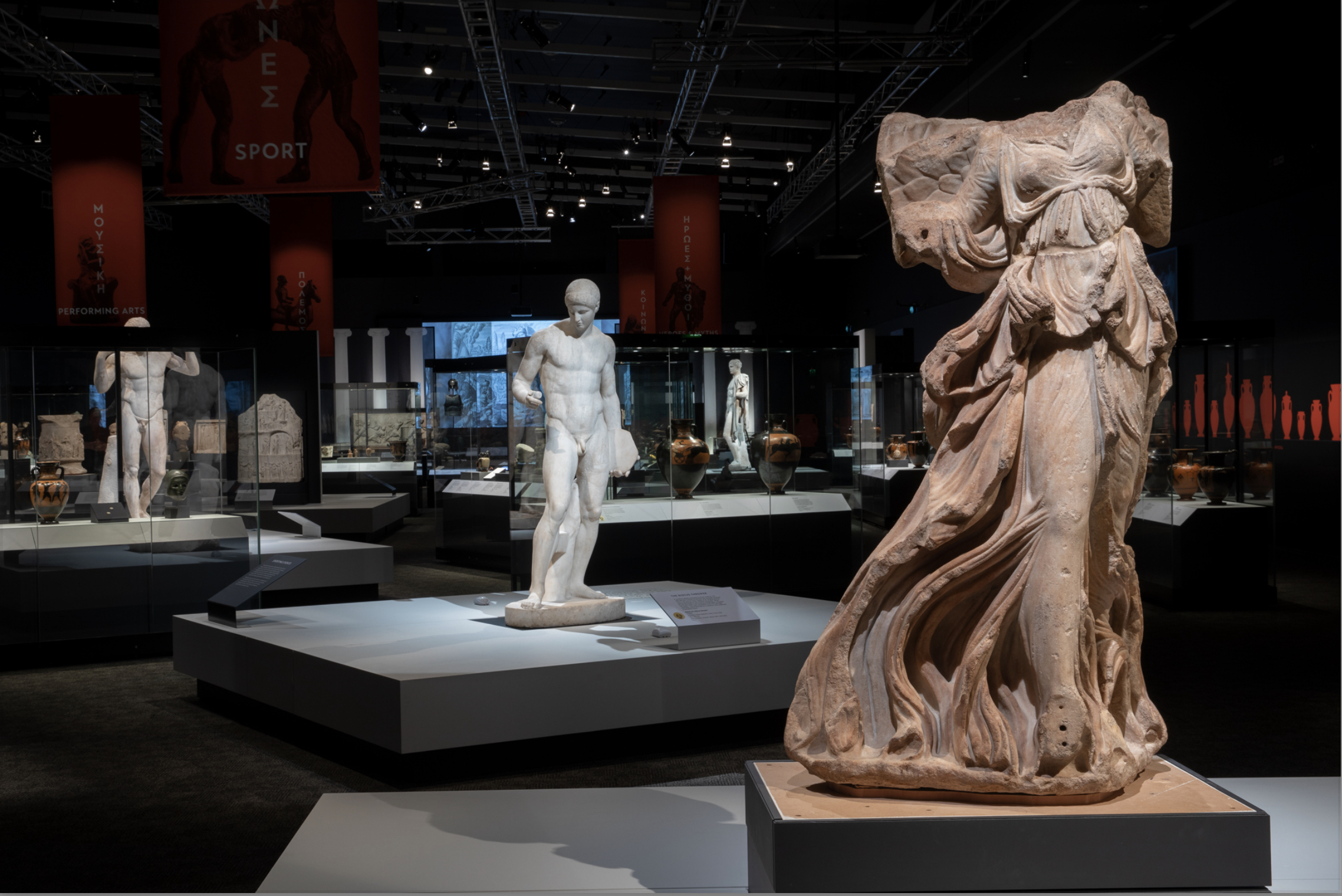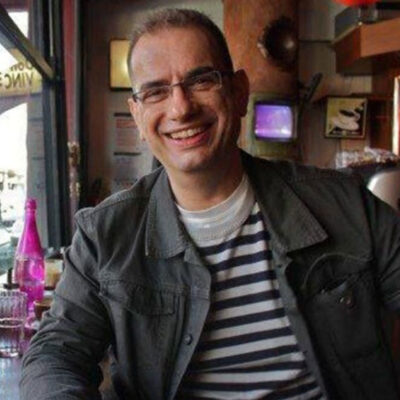
Ancient Greek works: From the British Museum to the National Museum of Australia
Fotis Kapetopoulos
Ethical questions around the Parthenon Sculptures
The British Museum’s controversial collections include The Parthenon Sculptures, or Marbles, which were taken in 1804 by Thomas Bruce (also known as Lord Elgin) from the Parthenon with the collusion of the Ottoman colonial rulers of Greece. It, among other colonial snatches, are the most globally recognised and the first of the museum’s collections targeted for repatriation by a foreign government, in this case Greece. The museum has refused to repatriate the Marbles. This has complicated Greek and British relations since the 1980s. The issue is of major significance to the large and influential Greek global Diaspora in Australia, USA and Canada.
So when Canberra’s National Museum of Australia (NMA) planned to hold the 2022 Ancient Greeks: Athletes, Warriors, and Heroes exhibition, featuring 170 Ancient Greek art works housed at the British Museum, they knew that the support of the Greek community in Australia was critical to its success.

The museum actively facilitated a sense of ownership in the Greek community via key partnerships and collaborations. The partnerships created a welcoming space for the community and helped mitigate controversy due to its association with the British Museum.
Key Takeaways
Key to the strategy was:
- Leading from the front: NMA actively sought partnership with the Greek community. It paid its respect to the Greeks, as a global diaspora and as citizens of Australia.
- Adequate timeframes: NMA began conversations with the Greek community of Canberra and national Greek Australian media 12 months prior to the opening.
- Community partnerships: Key collaborations were developed with influencers in the Greek community including the Hellenic Club of Canberra.
- Media partnerships: Neos Kosmos and the Greek Herald provided advice to the museum on communications and narrative development.
- Focus on the work: The exhibition was careful to focus on the importance of the ancient works and not to glorify the colonial aspects of their story.
- Safe spaces: Greek-speaking museum guides and priority discounts for Greek community and faith schools kept the exhibition accessible to the community.
Background
Australia is home to one of the largest Greek diasporas in the world – over 500,000 Hellenes across Australia and 300,000 in Melbourne alone. Greeks are conscious of their ancient and continuous civilization and language. And Ancient Greece holds a powerful attraction for all – its influence in cultural, artistic, social, political, scientific, philosophical, and sporting traditions is global.
The National Museum of Australia celebrates this reality in the 2022 exhibition Ancient Greeks: Athletes, Warriors, and Heroes, that features 170 Ancient Greek pieces, currently held by the British Museum, dating back to 800 BCE and up to around 140 CE.
Audience engagement may on the surface have seemed easy, given the nature of the exhibition. However, the British Museum’s acquisition of the Parthenon Sculptures could have created a publicity storm. Worse, it could have caused negative reactions in the large Greek Australian community.
The Parthenon Sculptures were torn from the Parthenon in 1804 by the Scottish noble, Lord Elgin, with the help of Greece’s colonial masters, the Ottoman Turks. Elgin sold them to the British Government in 1816. The call for their repatriation began in the 1980s. It was the first and now longest-running museum repatriation campaign in the world.
Proactive Partnerships
The National Museum of Australia led from the front as a real partner to the Greek Australian community. The museum began conversations with the Greek community in Canberra and national Greek Australian media 12 months prior to the opening. They developed successful partnerships with the Hellenic Club of Canberra and the Greek Herald.
In deciding to support the exhibition, Greek community influencers focused on the importance of presenting the incredible legacy of Ancient Greece to the Australian public. The Greek community saw the exhibition as a manifestation of their heritage and a chance for the cultural, sporting, theatre and military achievements of Ancient Greece to contribute to the knowledge, creativity and education of Australian citizens. As such, the NMA positioned itself as a collaborator in the process of creating greater awareness of the impact and importance of Ancient Greece among Australians.
Custodianship and Validation
The Hellenic Club of Canberra and the Greek Herald appear on all collateral, making it clear that they are co-custodians of the exhibition. The president of the Hellenic Club was invited to speak at the opening of the exhibition. The Greek community’s and Greek Australian media’s support validated the exhibition. The focus fell on the work and the National Museum of Australia, and detracted from the British Museum.
Media partnerships
Along with the mainstream media partners (ABC, Canberra Times, The Monthly, Saturday Paper, and the WIN Network) Greek media outlets The Greek Herald and Neos Kosmos became equal media partners. Neos Kosmos and the Greek Herald had access to the museum, to photos, key people and all the content. Senior directors of the museum and the curator of Ancient Greece were available for interviews and discussions.
The partnership included substantial paid media advertising packages from Neos Kosmos and Greek Herald, provided at a discount. In return, Neos Kosmos and the Greek Herald provided NMA with advice on communications and narrative development. Neos Kosmos published an opinion piece dealing directly with the controversial aspects of the British Museum.
Welcoming Spaces
Greek-speaking museum guides were hired to make the museum more accessible to all. Though most Greeks in Australia (and in Greece) speak English, this was an important mark of respect.
Greek community and faith schools were given priority to discount ticketing and the museum sought advice on how to engage Greek students and youth groups.

Focus on the Work
The museum’s partnerships helped to craft and deliver messages to the community. For example, part of the narrative developed by Neos Kosmos in the media package is a call-out to all Greek diaspora to support the exhibition. The call-out is emotive and hooks into the Greeks’ deep understanding of their own position in global culture.
The works in the exhibition reflect the Hellenic civilisation from 800 BCE and the art works span across the ancient world all the way to the Black Sea. It is divided into six sections: Nike, Goddess of Victory; Sporting Competitions; The Performing Arts; War; Heroes and Myths; Society: Competition in Life and Death. Some of the objects include a marble frieze depicting Greeks fighting Amazons which formed part of the Mausoleum of Halikarnassos, one of the Seven Wonders of the Ancient World from about 350 BCE. The exhibition also provides rare insights into the lives of women in Ancient Greece.
Fotis Kapetopoulos
Fotis Kapetopoulos heads Kape Communications and is an adviser for Neos Kosmos, Australia’s leading Greek Australian media outlet. He is an expert in multicultural communications and audience development. He was a director of Multicultural Arts Victoria, Development Manager for the Melbourne International Jazz Festival, Editor for English Edition of Neos Kosmos, and Multicultural Media Adviser to Former Victorian Premier, Ted Baillieu. Recently he co-produced the Melbourne Rebetiko Festival and ran Bite the Big Apple! New York City Arts Management and Athens Burns Bright! Cultural Ecology tours. He was awarded a Smithsonian Institution Internship and an Asialink Arts Management residency.
What is the Imagine Project?
We’re publishing case studies and documenting Australia’s best work in advancing cultural diversity and racial equity and inclusion in the arts through the Imagine Australia Project, managed by Diversity Arts Australia (DARTS) and funded via the Australia Council’s Re-Imagine project and supported by Creative Equity Toolkit partner, British Council Australia. To find out more click below – or read the other case studies as they go live here.

